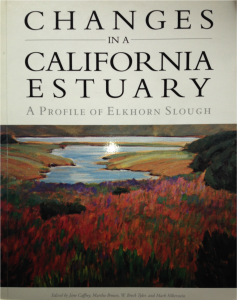By Mary Yoklavich and Greg Cailliet (3 March 2016)
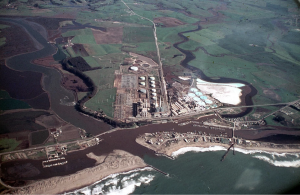
MLML’s students and faculty have been up to their hip boots in the mud of Elkhorn Slough for over 40 years. In 1974, just a few years after the Lab’s establishment, professors Bill Broenkow, Jim Nybakken, and Greg Cailliet coordinated the first comprehensive cataloging and collection of the Slough’s flora and fauna. This effort resulted in the milestone MLML report on the hydrography and ecology of Elkhorn Slough, Moss Landing Harbor, and nearshore coastal waters, which now serves as an invaluable baseline from which to evaluate ongoing change occurring in the Slough and surrounding environs.
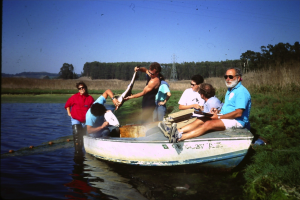
Winding seven miles inland from Moss Landing Harbor, the Elkhorn Slough provides refuge for more than 100 fish, 550 marine invertebrate, and 340 bird species. The Slough is a critical wintering and stopover site for birds migrating along the Pacific Flyway and has been recognized as a “Globally Important Bird Area” by the American Bird Conservancy and the National Audubon Society. Resident sea lions, harbor seals, and the greatest concentration of the endangered Southern sea otter on the West Coast also are all found in the Slough’s waters and on its shores. Spawning, feeding, nesting, and nurturing by a menagerie of organisms all take place within the Slough’s channels, mudflats, eelgrass beds, and salt marshes.
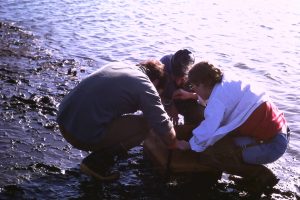
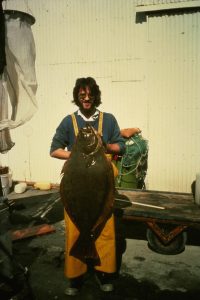
Ecological studies conducted by MLML students and professors on the feeding habits, growth, and movements of fishes, birds, and mammals played a significant part in the Slough’s designation as a National Estuarine Research Reserve in 1979, affording it recognition as a field laboratory for scientific research and education. The Research Reserve’s establishment led to the formation of the Elkhorn Slough Foundation in 1982, which serves as a land trust and is actively involved in restoration of some of the Slough’s key habitats. The Foundation, directed by MLML alumnus Mark Silberstein for more than 30 years, has been widely recognized for its ecosystem-based watershed stewardship focused on land acquisition, education, science, and restoration.
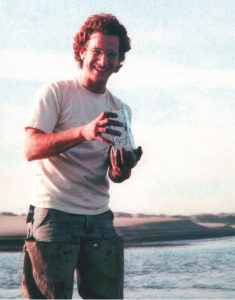
During the ‘80s, programs were established to monitor water quality and track non-point source pollution in the Slough. MLML supported the California State Mussel Watch Program, which measured the uptake of pesticides by these bivalves at several stations throughout the Slough. This program evolved into what is now the successful Marine Pollution Studies Laboratory at MLML, which was initiated by graduates of MLML and is now directed by MLML alums Rusty Fairey and Wes Heim.
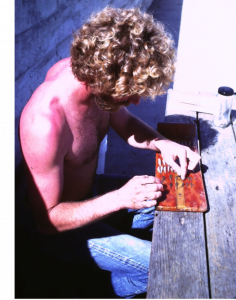
Also in the 1980s, students and former students of MLML started research on restoration of salt marsh communities in the Slough. These efforts also considered changes in Slough hydrology that had taken place after 1946 when the U.S. Army Corps of Engineers dredged a channel across the sand spit to create the present-day entrance to Moss Landing Harbor. A collection of aerial photos was used to evaluate changes in habitat and land use in the Slough’s watershed since 1931, including the effects of erosion, human trampling, cattle grazing, and marsh loss on habitats and associated floral and faunal communities. The Central Coast Wetlands Group at MLML, headed by alumnus Ross Clark, continues efforts to improve the condition of local wetlands such as the Slough.

The pace of MLML student research in Elkhorn Slough continued into the new millennium. Professor Jim Harvey (a graduate student of Vic Morejohn’s in the 1970s and current Director of MLML) and his long list of students have studied many aspects of harbor seal ecology in the Slough. In addition, sea otters, leopard sharks, algae, seagrasses, and many other organisms have been the topics of graduate work at MLML. The health of the ecosystem remains an area of focus, and students have examined the effects of domoic acid, nutrient pollution, heavy metals, diseases, invasions, and erosion on the system.

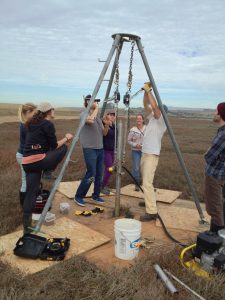
In all, more than 55 graduate student theses have been completed on Elkhorn Slough, accounting for nearly one-tenth of all student research at MLML. In addition, data sets spanning more than 30 years have resulted from surveys of Slough communities conducted by students in MLML’s Ichthyology and Marine Ecology classes. These long-term data products are of high value to researchers interested in change occurring in California’s coastal ecosystems. As a recent example, alumnus Brent Hughes used MLML records in his doctoral work at UC Santa Cruz, connecting the increase in numbers of Southern Sea Otters to clams, crabs, and the overall health of eelgrass beds in Elkhorn Slough; Brett’s work was recently published in the Proceedings of the National Academy of Sciences.
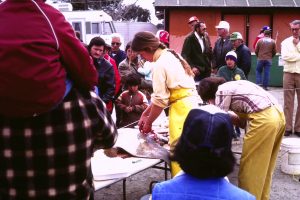
The history of MLML’s research in Elkhorn Slough and its watershed was chronicled in the 2002 book Changes in a California Estuary, A Profile of Elkhorn Slough. Our understanding of the physical properties and associated biota of this very special corner of Monterey Bay, and how it will be affected by local, regional, and global impacts, is founded on the studies conducted by the students and professors of MLML.
